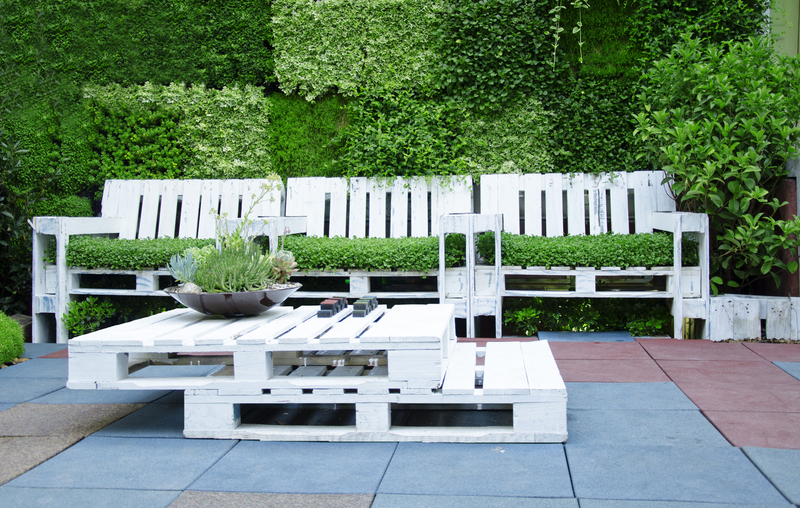The Ultimate Guide to Achieving Eco-Friendly Home Design
Welcome to the world of eco-friendly home design! It's more than just a trend; it's a movement towards sustaining our environment while creating a beautiful, efficient, and healthy living space. This comprehensive guide will walk you through the essential practices to create a home that reflects your commitment to environmental stewardship.
Understanding Eco-Friendly Home Design
Before diving into the practical tips, let's first discern what eco-friendly home design entails. Essentially, it involves designing and constructing homes that have a reduced impact on the environment. This approach focuses on resource efficiency, promoting sustainability, and ensuring the occupants' well-being.

Key Elements of an Eco-Friendly Home
1. Energy Efficiency
- Solar Panels: Harnessing the power of the sun is a prime strategy for reducing energy costs and shrinking your carbon footprint.
- LED Lighting: Switching to LED lights can significantly lower energy consumption.
- Energy-Efficient Appliances: Opt for appliances with high energy ratings to maximize efficiency.
2. Sustainable Materials
Using sustainable building materials is crucial for eco-design. These materials are typically renewable, recycled, or have minimal environmental impact.
- Bamboo: This fast-growing grass provides a durable, flexible alternative to traditional hardwood.
- Recycled Steel: Perfect for structural supports, recycled steel reduces the need for new materials.
- Cork Flooring: Besides being aesthetically pleasing, cork is sustainable and has excellent insulation properties.
3. Water Conservation
- Low-Flow Fixtures: Install water-saving faucets, showerheads, and toilets to reduce water usage.
- Rainwater Harvesting: Collect rainwater for garden irrigation and non-potable uses.
- Smart Irrigation Systems: Use technology to water your garden efficiently, adapting to weather conditions and soil moisture levels.
Designing an Eco-Friendly Living Space
Creating an eco-friendly home goes beyond using green materials. It extends to design principles that optimize energy use and enhance the quality of living.
Harness Natural Light
Design your home to maximize natural light. Consider open floor plans, strategically placed windows, and skylights. This approach not only decreases reliance on artificial lighting but also creates a bright, pleasant environment.
Insulation and Thermal Mass
Proper insulation is essential for minimizing energy loss. High-quality materials such as sheep's wool or recycled cotton can improve warmth retention. Incorporate thermal mass elements like stone walls or floors to naturally regulate indoor temperatures.
Choose Eco-Friendly Colors and Textures
Select paints with low VOC (Volatile Organic Compounds) to ensure air quality. Textures made from natural fibers--such as jute, hemp, or organic cotton--add both beauty and eco-credentials to your home d?cor.
Expanding Eco-Friendliness Beyond the Indoors
Sustainable Landscaping
- Native Plants: Use plants that naturally thrive in your climate, requiring less water and maintenance.
- Xeriscaping: This landscaping method minimizes water usage through drought-resistant plants and soil management.
- Composting: A compost bin is a great way to recycle organic waste while enriching soil naturally.
Smart Home Technology
Integrate smart home systems to monitor and optimize energy usage. From programmable thermostats to smart lighting controls, technology can play a pivotal role in crafting an energy-efficient, eco-friendly home.
Benefits of Living in an Eco-Friendly Home
Beyond conserving resources and reducing pollution, eco-friendly homes offer numerous benefits:
- Cost Savings: Over time, reduced reliance on utilities and careful resource management save money.
- Healthier Living Environment: Improved air quality and less exposure to toxins benefit overall health.
- Increase in Property Value: Sustainability is increasingly valued in the real estate market.

Challenges and Solutions in Eco-Friendly Design
While eco-friendly home design presents challenges like higher upfront costs or sourcing sustainable materials, these can be mitigated. Consider the use of government incentives or rebates for energy-efficient installations. Partner with builders knowledgeable in green construction to maximize your investment.
Conclusion: Join the Movement
Achieving an eco-friendly home design is a significant step towards a healthier, more sustainable lifestyle. By implementing the strategies and practices outlined in this guide, you invest not only in your home and well-being but also in the planet's future. Join the movement, experience the transformation, and inspire others along the journey.
Start today and be the change your world needs!